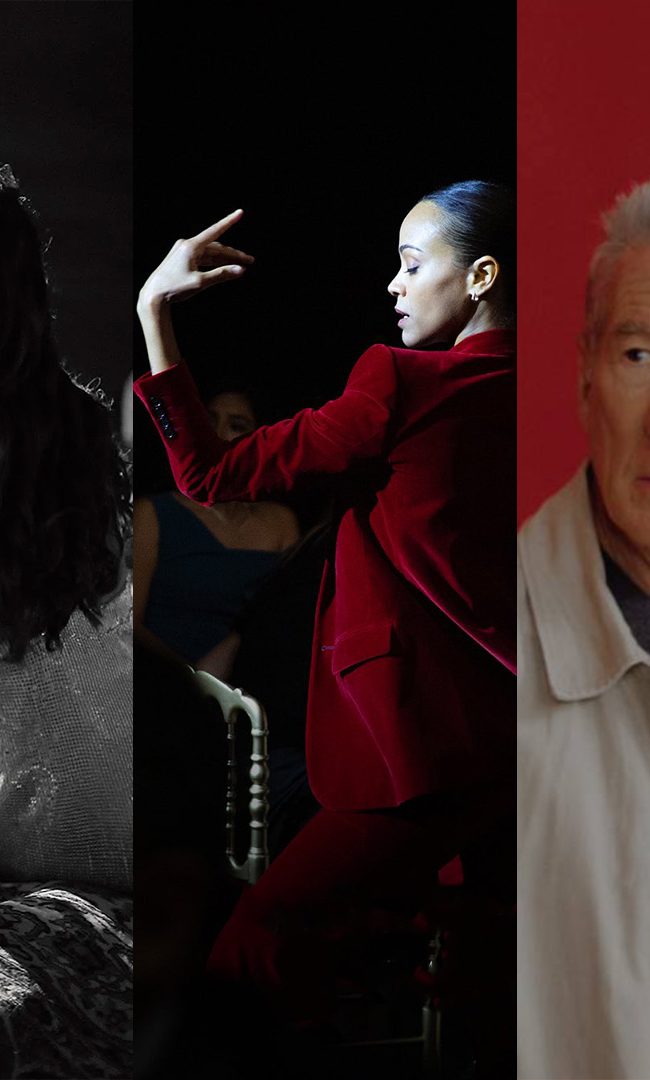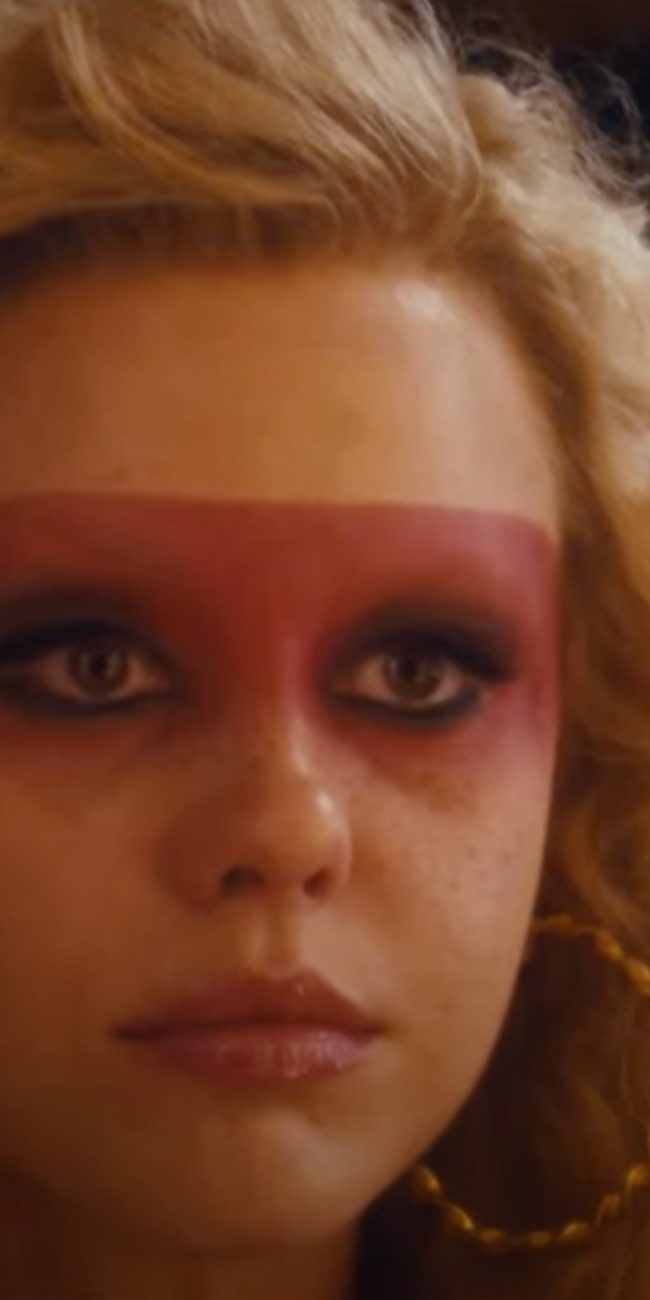Tully’s 2009 Tribeca Film Festival Wrap-Up
I have always been skeptical of the Tribeca Film Festival’s… how should we call it… agenda? With such a humongous lineup of proudly advertised “world premieres,” it has always felt like the festival’s priority was more relentlessly focused on premiere status over actual quality (a problem with just about every high profile festival, I realize). While I understand that the TFF has some serious fiscal backing and some powerful supporters, this still poses a problem. When you’re just three months past Sundance and one month before Cannes, that approach seems like an incredibly dangerous one, no matter who you are. From the films I’ve managed to see at past festivals, calling this approach dangerous is being kind. But this year, with the news that the lineup had been trimmed and there were (to my ignorant eyes) many more New York premieres, lessening that “world premiere” burden, I felt a surge of hope for the festival that I hadn’t previously felt. Having seen twelve features and a few shorts at the 2009 edition, I am happy to report that things appear to be heading in the right direction.
That said, the opening American Express commercial that played before every film seemed head-scratchingly inappropriate. This was supposed to make us swirl and swell with pride for the TFF, as it was rejuvenating the energy of downtown Manhattan—specifically the neighborhood for which the festival is named. But aside from a few one-off drive-in screenings and the closing weekend’s screenings at Tribeca Cinemas, the festival didn’t take place in Tribeca. This year, for all intents and purposes, it was the Union Square/East Village Film Festival. While I actually didn’t think I cared about that issue, being reminded of it every single time I sat down to watch a movie made me care. Note to TFF: if next year plays itself out in a similar location pattern, you might wanna hold off on the grandstanding. But enough about that. Let’s talk about the movies themselves, which is the point, after all.
(A reminder: let it be known that I only saw 12 features, so this is in no way a comprehensive reading of the festival’s program!)
GRAND JURY PRIZE (NARRATIVE)
The House of the Devil (Ti West) — This is one of those cases where a film spoke to me so directly that it’s hard to be objective about it. That said, I watched this with some folks who weren’t watching movies like Let’s Scare Jessica to Death when they were eight years old, and it seriously worked for them as well. West avoids any lame smatterings of irony to deliver a film that, sans familiar faces (Ms. Gerwig, Mr. Noonan, Ms. Wallace, Ms. Woronov), I would have believed was a lost horror classic from 1983. As the film unfolds at its slowly foreboding pace, West shows his mastery over every element within the genre, especially with regards to cinematography (by Eliot Rockett). He dollies when he needs to. He zooms at the right moments. He employs close-up sweep pans to add a subconscious layer of tension in the exact right places. Sonically, West and sound designer Graham Reznick also create an unbearable level of dread. By the time the shit hits the fan, man-oh-man, West has earned it and we are about to be drenched in blood. For aspiring filmmakers worried about taking the period piece plunge, The House of the Devil provides proof that with ingenuity and a whole lot of talent, it can very well become 1983 all over again. I love this movie.
GRAND JURY PRIZE (DOCUMENTARY)
Cropsey — While I also connected deeply to this film’s subject matter on a purely superficial level, Joshua Zeman and Barbara Brancaccio have produced a work that thoughtfully and expansively explores the urban legend phenomenon. At the same time, Cropsey is a chilling investigation of one particular community’s missing children problem. That it happens in Staten Island adds immeasurably seedy flavor to the proceedings. With this particular case, Zeman and Brancaccio get to cross off the checklist in one fell swoop—boogeyman, Satanism, deranged madman. But the best part—the part that makes these urban legends so fascinating and this film so exceptional—is that they aren’t able to provide a cut-and-dry answer to put these myths to bed. As a result, Cropsey only stokes our imaginations’ spookiest fires.
THE REST OF THE REST (in no particular order, necessarily)
Still Walking — I finally got to catch up with Hirokazu Kore-eda’s latest effort after hearing about it since Toronto, and it didn’t disappoint. In his introduction, Kore-eda said he was worried showing this deeply personal film to a Western audience, who might not be able to relate to the film’s themes and story. Let’s see here… a profesionally drifting adult returns home to spend an uncomfortable day with his domineering mother and stubborn father who still treat him like a child… gee, that doesn’t sound like something anyone in America could possibly relate to. With the utmost grace, Kore-eda tells his simple tale, which is profoundly moving every step of the way.
Fish Eyes — First time feature filmmaker Zheng Wei takes an experimental approach to telling the quiet story of a father and son who live in extreme isolation in rural Mongolia. A young woman enters their life, and, in keeping with these characters’ sense of solitude, they don’t explore what could have driven her here. They simply appreciate her presence. Fish Eyes might take a while to cast its spell, but when it does, its hooks sink comfortably into one’s skin. Picked up for distribution by Benten/Watchmaker Films, this first theatrical acquisition establishes that this distribution partnership certainly isn’t in it for the money. Fish Eyes is a deceptively minor film that reverberates; it also marks the arrival of a fresh new voice on the world cinema scene.
The Exploding Girl — Less than 24 hours removed from having seen Bradley Rust Gray’s film, my appreciation for it is still growing. Like Fish Eyes, the story that this film tells is a minor one, but that isn’t to belittle it in any way. Gray is clearly in full command of his vision, employing a detached and formal visual approach that keeps viewers on the observational side of the emotional fence. But in the film’s third act, things turn and we begin to truly feel for this young woman. Winner of the Best Actress award at this year’s festival, Zoe Kazan delivers a refreshingly understated and natural performance. And this is a performance.
Blank City — I haven’t done my homework, but to my eyes, Celine Danhier’s Blank City is the definitive document of New York City’s DIY underground film movement of the late 1970s and early 1980s. Yet to call this movement underground is overstating things. The spontaneous off-the-cuff super-8 cinema that these artists were churning out makes mumblecore look like big-budget Hollywood. Danhier presents an onslaught of incredible archival footage that really gets at the core of what these individuals were doing. New York City was a different place back then, and it’s clear that the dangerous atmosphere fueled the anarchic, punk rock content of these films. To be honest, Blank City didn’t make me feel like this was an even somewhat important cinematic movement. But as a time capsule and a glimpse into New York City at such a volatile and bustling and unique moment in time, it more than delivers.
In the Loop — Another film that I finally got to catch up with at Tribeca, Armando Iannucci’s In the Loop is indeed smart and funny, but I can’t deny the fact that the Office-esque presentation didn’t make it feel as fresh and alive as I had been expecting. That said, there are some laugh out loud moments and I found myself playing catch-up throughout to figure out exactly what was going on (a good thing). Another strange point: I’m the last person in the world to complain about foul language, but in this case, it bordered on the gratuitous to me. More specifically, it felt like it was being used to enhance situations that otherwise might not have been as funny otherwise. Some of it felt more juvenile than I was expecting, especially when compared to the more intelligent satire that was occurring at such a breakneck pace.
Racing Dreams — Or, as I like to call it, The Highest Grossing Documentary of 2009. Just kidding. Or not. Marshall Curry follows three adolescent go-karters who dream of becoming Nascar drivers when they grow up, and the result is an automatic crowd-pleaser. For me, the best moments are the non-racing ones, in which we get lovely little glimpses and reminders that kids are pretty much still the same. Curry gets to scratch the happy surface a bit further with one boy’s difficult relationship with his father. Of course, the film does take place over the course of one year and is leading up to the climactic national championship, so there is that undeniable element as well. Whoever buys this movie has a hit on their hands.
P-Star Rising — Not a perfect documentary by any stretch of the imagination, Gabriel Noble’s portrait of an aspiring child rapper, Priscilla Diaz, nonetheless has a lot to say about our fascination with stardom as well as a parent’s sometimes inappropriate controlling of his or her children. For me, what elevates P-Star Rising is not Priscilla, who is clearly overflowing with talent and maturity. It’s the frank and at times unsettling portrait of her father, who is unable to leave the past behind. Clearly he loves his daughter, but even more clearly, he is dragging her into his own unresolved feelings of dissatisfaction and regret. Ultimately, it’s up to Priscilla to put him in his place, which she does.
Vegas: Based On A True Story — I was completely sucked into this movie for the first 30 minutes, but as the family began to unravel, so too did my connection to it. This is a genuinely great concept, in which a Las Vegas family who is already wrestling with gambling demons, learns that there might be a stash of loot hidden in their hard. After deliberations, the excavation begins. Director Amir Naderi is to be commended for trying to actually say something with his film. The problem is when he says it too loudly. It’s a murky line, and I found myself teetering back-and-forth throughout. To be honest, I don’t know exactly where I land with regards to Vegas: Based On A True Story. When it was a movie, it worked for me. When it became a morality play, it worked less so.
The Wild and Wonderful Whites of West Virginia — Let me put it this way. It was not a good idea to watch this movie hours after having seen SXSW Grand Jury Prize winner 45365, which is a just miraculously lovely and touching non-fiction ode to small town America. In comparison, this film, while not outright exploitation—for these bozos are clearly aware of what is happening to them—still feels like some glossy MTV silliness. Filmmaker Julian Nitzberg kindly acknowledges this fact by interviewing the local authorities, who make two very valid points: 1) Why aren’t they making a doc about the local boy who just got accepted to MIT? and 2) The Whites don’t reflect Boone, West Virginia; they merely reflect themselves. Fair enough. But the fact remains, are the Whites really that different or extraordinary than my own small town’s version (whose name I won’t mention for fear of being tracked down and slaughtered next time I return home)? I grew up around this shit and have stories that shatter any of the content in this movie.
Deadline — Joseph Bakhash and his collaborators have made a short that has the sweep and scope of a full-on feature. Initially, I was worried that the staggeringly impressive production value might threaten to swallow the actual content, but Norman Reedus and Chris Mulkey bring a gravity to their performances that provide the solid grounding that it needs. The story is better left undescribed, though it fits in the category of a revenge fantasy gone brutally visceral. More than just a calling card, Deadline is one of the year’s most impressively executed shorts.
— Michael Tully











